-
×
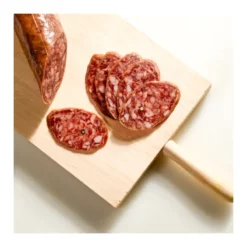 Domiciano García Iberian Spicy Sausage Cular Extra (820g)
€21.80
Domiciano García Iberian Spicy Sausage Cular Extra (820g)
€21.80 -
×
 COVAP Iberian Bellota Ham 50% (120g)
€32.80
COVAP Iberian Bellota Ham 50% (120g)
€32.80
Subtotal: €54.60
Learn more about why Iberian hams are one of the World's great delicacies and in such demand in 'The Toma Guide to Iberian Hams'.
From the heart of the Dehesa de Extremadura comes this Azuaga Iberian cebo mix of leg and shoulder ham. Certified with the Iberian ham quality standard and their curing period ranges from 14 to 36 months.
€95.17 | Kg
€28.55
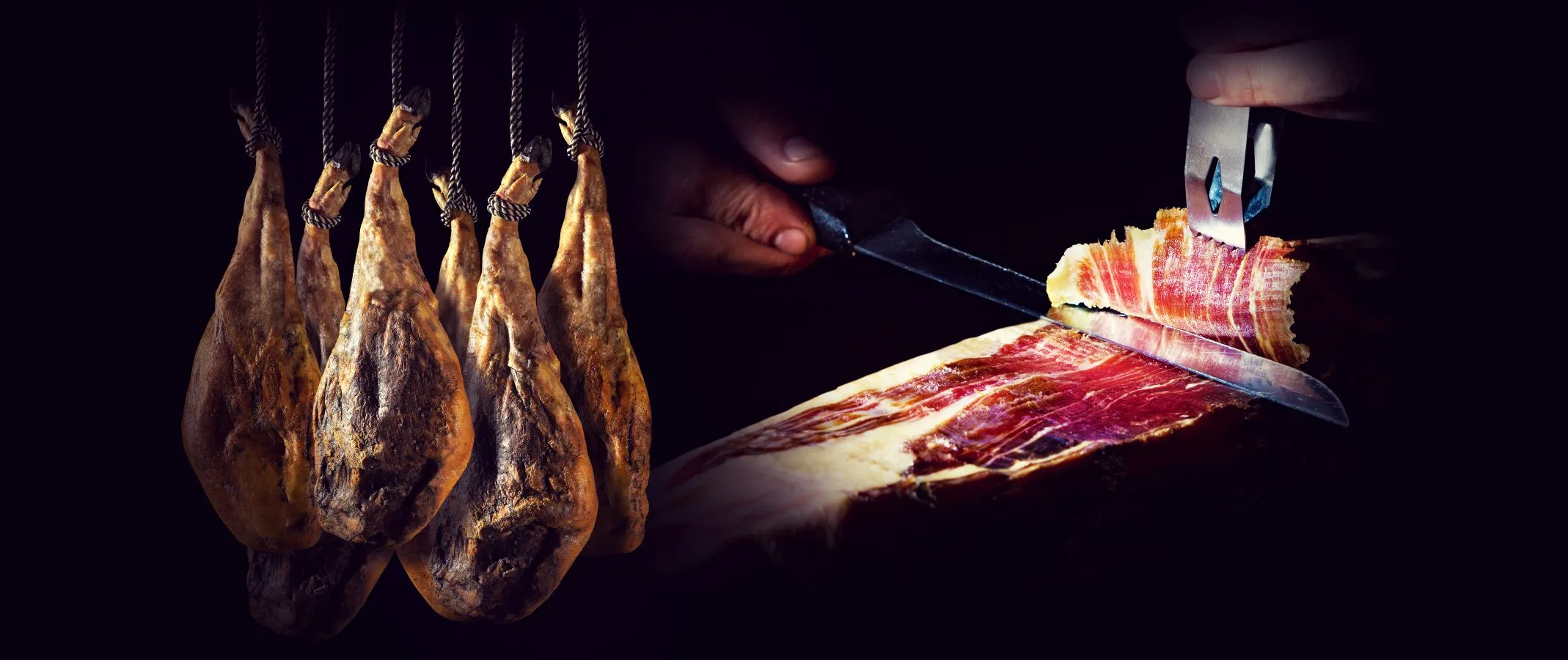
Iberian pork ham and shoulder, salt, preservatives (E-252 and E-250).
Gluten Free.
| Nutritional Information - per 100 grams | |
|---|---|
| Energy | 1372Kj | 330 Kcal |
| Fats | 24.3g |
| of which are saturated | 9.9g |
| Carbohydrates | 0.5g |
| of which are sugars | 0.5g |
| Fibre | 0g |
| Proteins | 27.8g |
| Salt | 4.3g |
Store in cool dry location or refrigerated
Typical shelf-life of 3 months in original packaging.
Always check package instructions when it arrives for specific information.
Vacuum packed.
Fecha de consumo preferente means best before date, and Fecha de caducidad means expiry date. Date formats on Spanish products are the same as in Ireland, i.e. dd/mm/yyyy.
All cured meats are best served at room temperature so remove from storage location at least 20 minutes before serving.
Produced by:
Campodulce Curados,
P.I. El Campillo,
C/Francia s/n
21650 Huelva
Spain
| Weight | 0.33 kg |
|---|---|
| Net Weight | 300g |
Only logged in customers who have purchased this product may leave a review.
GUIDE TO IBERIAN HAMS
First and foremost, don't confuse Iberian hams with Serrano hams. They are quite different. You will find an explanation of Serrano hams on any page with that product.
The Iberian Pig
All Iberian hams come from the Iberian pig. Other cuts are also produced such as the tenderloin, or lomo in Spanish, and varieties of sausage, salchichón, a selection of which are available in our store.
This breed of pig is considered special because it has a unique ability to absorb and store fat within its muscle tissue. This is what creates that beautiful 'marbling' in the meat and is one of the main reasons why Iberian ham is so melt in your mouth delicious, and is in such demand around the world.
A 100% Iberian-bred pig has black hooves from which the term pata negra comes from. Pigs that are less than 100% Iberian-bred can also have black hooves but they are not referred to as pata negra in the context of Iberian ham.
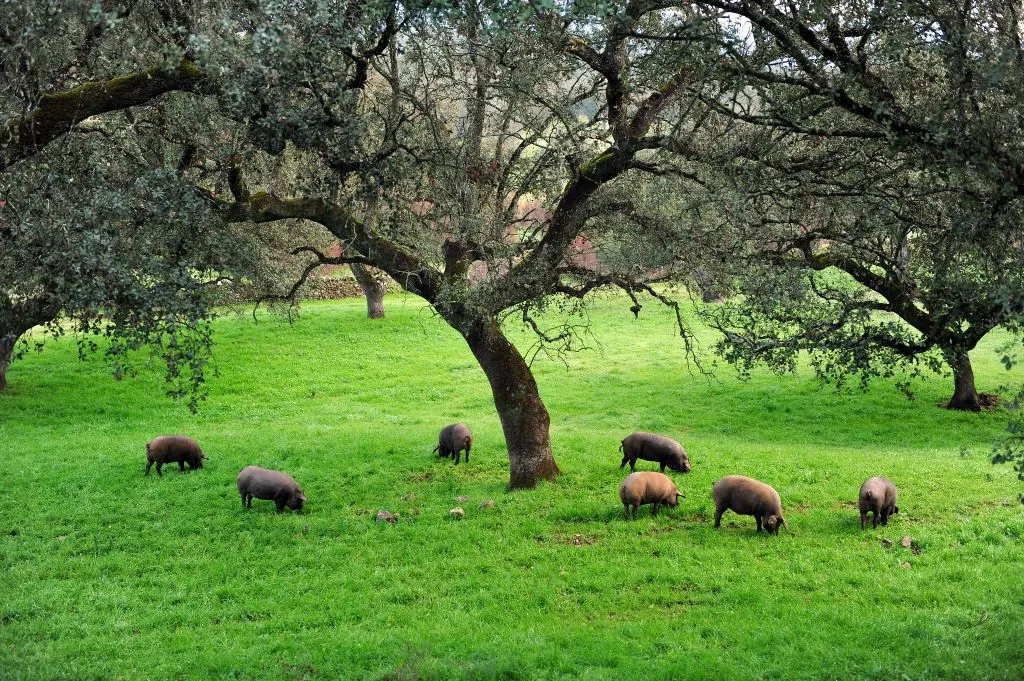
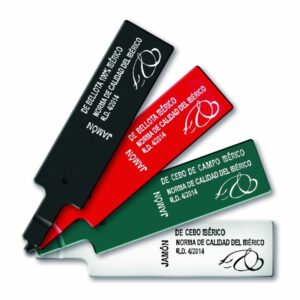
The Labelling System
To understand the different categories of hams, a labelling system was introduced by the Spanish government in early 2014. This new system is aimed at clearing up some terminology that varied widely and caused confusion for natives and foreigners alike. Terms like cebo, cebo de campo, bellota, 100%, 50% etc. are now all covered by this labelling system, so although we use some of that terminology in our store, the most important information you need to know is the labelling system.
All Iberian ham legs and shoulders sold in Spain and abroad now have a label on them and it will have one of the colours, black, red, green or white. If it does not have this label then it is not certified as an Iberian ham and cannot be named that way. This label is kind of like a birth certificate for the ham that also covers it's history until it reaches the consumer.
Unfortunately, the system only covers full legs and shoulders and is not displayed on packaging once the ham has been sliced in any way. Not to worry though, we have done all that work for you in this store. In the images that go with each product you will see one of these labels. You will also see it in the "tags" section with each product.
So what does each colour label represent?
The short answer to that is that black is the highest quality, then red, green and white. You shouldn't feel you are getting the short straw if you end up with something that is not black. They are all Iberian hams of high quality and are delicious.
"All pigs are delicious, but some are more delicious than others"!
Regulatory colour labelling system for Iberian Hams
The 'montanera' is the final and most crucial phase in the raising of Iberian pigs. It refers to the period during which these pigs roam freely in the dehesa (Mediterranean oak forest pastures) and primarily feed on acorns (bellotas) that fall from the holm oak, cork oak, and gall oak trees. It takes place from October to March each year, when there is an abundance of acorns falling freely for feeding.
Is that all there is to it then?
Err...not quite, but you can read on if interested because we still need to talk about curing periods and methods, regions, and a few other bits and bobs, including the difference in a shoulder and leg ham, and the price.
The Curing Period and Process
All steps in the delivery of this premium gourmet product are important and the curing and drying stages are no different. Some hams are left to cure for over 4 years and need exactly the right environment along with regular attention. It is the time when the real magic happens and it requires skills and facilities that only a few possess, which perhaps explains why the product is so expensive.
It should be noted that each producer has different variations of the same processes so this is just a general guide, but they will comply with the Protected Designation of Origin regulations required for their certification if they possess that.
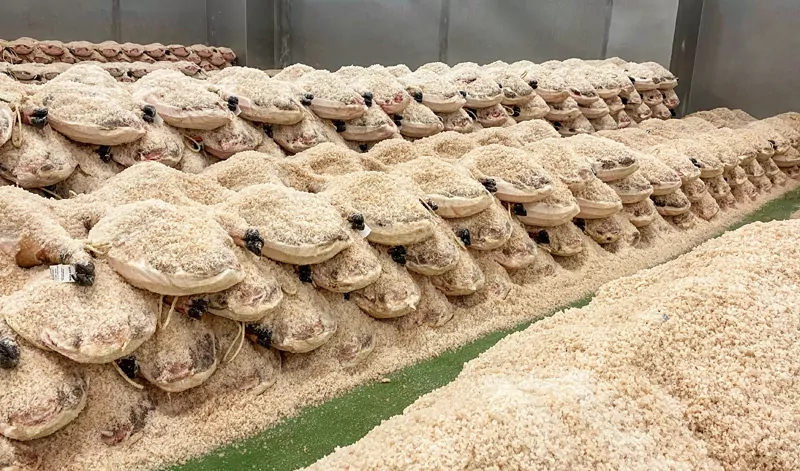
Iberian hams during the salting process
Salting
The hams are covered in sea salt and left for between 7 and 10 days, depending on the size of the ham but usually 1 day per kilogram. The purpose here is to dehydrate the ham and initiate the preservation process. The excess sea salt is then washed off with warm water.
Then the hams are left to rest in refrigerated chambers for between 30 and 90 days to allow for even moisture removal. The humidity is gradually reduced to prepare for the next stage, drying and maturing.
This stage involves the hams being left to hang in natural drying rooms for 6 to 9 months at quite varying temperatures between night and day and season to season, including up to 30ºC. The ventilation is always controlled. The fat absorbs into the muscle fibres, enhancing the flavour and aroma.
After that it's off to the cellars for the full curing to begin.
This can take anywhere between 12 and 48 months - that's 4 years curing on top of the raising of the pig, and the steps above.
Is there another food product in he world that takes that long and that much care and attention to produce?
Black label hams are cured for between 36 and 48 months, with red label being slightly less, green label between 24 and 36 months and white label between 12 and 24 months.
Basically, the longer they are cured the deeper and more intense the flavour becomes.
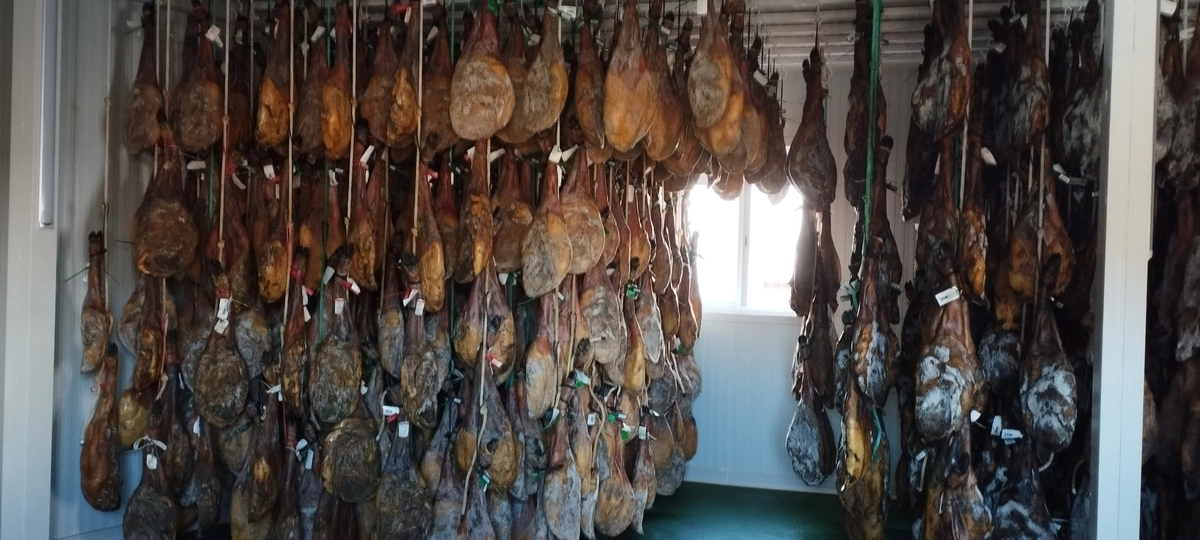
Iberian hams drying before the long curing period
Shoulder or Leg Ham and why the price difference?
First of all, the Spanish never refer to a 'leg of ham' in their language. A ham, or jamón, is all that is used and it automatically refers to the hind leg. Therefore, when you only see the term jamón in an Iberian ham, you will know the hind leg is the product. The shoulder (or front leg) will be specifically stated as that, paleta.
The paleta is significantly cheaper than the jamón and the reason for that is that mainly twofold:
If buying a full shoulder, it is much smaller than a hind leg and there is less ham on it in weight and as a percentage. So even though it is from the same Iberian pig, fed on the same diet etc., it is more expensive.
The curing time is also a factor. Shoulder hams are much thinner and therefore require much shorter curing times. A black label jamón requires a minimum of 36 months curing but the shoulder only requires 24 months. So that is an extra production cost that is reflect in the price.
Is the difference in price worth it?
We can't answer that for you unfortunately. It's a matter of taste and pocket!
Many Spanish talk about the paleta as their favourite part but that may be because they are more used to it. You are certainly not getting a cheap, or low quality cut with the paleta, or shoulder ham.
There is a difference in texture though. The jamón has a more even distribution of the fat in it than the paleta, and it has a less nuanced taste.
You should be able to see the differences in the fat distribution in the two different cuts in the image. It's not so much that there is more fat in the shoulder cut, but more about how it is infiltrated in the ham.
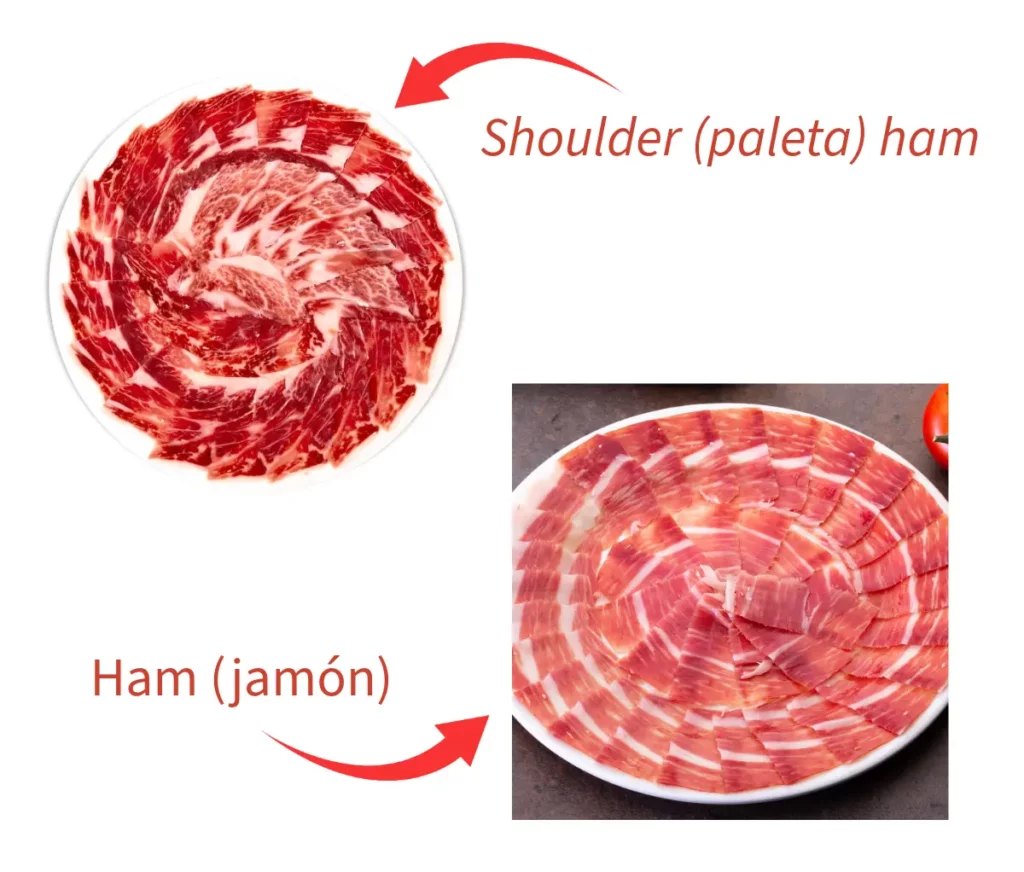
Reviews
There are no reviews yet.